sofco Enters a New Chapter Under New Leadership and Ownership
A resilient supply chain is every supply chain professional’s dream.
In today’s interconnected global market, building a resilient supply chain is crucial to help navigate uncertainties, disruptions, and ever-changing customer demands.
An End-to-End supply chain planning solution, like sofco Planning, plays a vital role in achieving this resilience. By integrating various planning processes and optimising decision-making, such a solution can help streamline operations, enhance visibility, and proactively respond to challenges.
An article in CSCMP’s Supply Chain [Quarterly] detailed key areas of focus when considering building a resilient supply chain:
- capacity management
- a diverse supplier network
- culture of continuous improvement
- high forecasting accuracy
- system thinking
You can check out the article here.
Bearing these details in mind, let’s consider how you can make your supply chain more resilient, and able to withstand an increasingly volatile global market.
1. Assess Your Current Supply Chain
Before embarking on implementing a supply chain planning solution, it is beneficial to conduct a comprehensive assessment of your current supply chain. Identify pain points, bottlenecks, and areas that require improvement. Assess the effectiveness of existing planning processes, the quality of data available, and the integration between different supply chain functions.
2. Define Your Goals and Objectives
It is important to define your guiding principles before you embark on a project to ensure that it runs as smoothly as possible. Identify specific areas where you want to enhance resilience, such as reducing lead times, improving demand forecasting accuracy, optimising inventory levels, or enhancing collaboration with suppliers and partners.
3. Select the Right Supply Chain Planning Solution
Of course, we are going to promote sofco
Selecting a planning solution provider is more than just selecting software. You want to work with an experienced team that aligns with your own business’ requirements and goals. Evaluate various supply chain planning solutions available in the market and consider factors such as scalability, integration capabilities, analytics and reporting functionalities, ease of use, and the solution provider’s expertise and support.
Check out our ‘why sofco’ page to learn more about how our team of experts brings value to every project.
It’s also important to consider the practical benefits your planning solution will offer you, considering aspects such as data integration and centralisation, demand forecasting and inventory optimisation, and collaboration and visibility.
Successful supply chain planning relies on accurate and real-time data from various sources. A solution, like sofco Planning, will enable seamless integration with your existing systems, as well as implementing advanced demand forecasting techniques and algorithms that are able to leverage historical data, market insights, and predictive analytics to improve accuracy. It will also optimise inventory levels by aligning stock levels with anticipated demand, considering factors such as lead times, seasonality, and variability. By adopting this as part of a collaborative approach, you will enable real-time information sharing and communication with suppliers, partners, and other stakeholders. This will facilitate early detection of potential disruptions and foster proactive mitigation strategies.
4. Scenario Planning and Risk Management
Even a planning solution as sophisticated as sofco Planning doesn’t come with a crystal ball. However, you can manipulate the application to conduct scenario planning and risk management exercises. Simulate various what-if scenarios to evaluate the impact of disruptions, changes in demand, or supply chain bottlenecks. Identify vulnerabilities and develop contingency plans to mitigate risks and ensure business continuity.
5. Continuous Improvement and Adaptation
Building a resilient supply chain is an ongoing journey. Continuously monitor the performance of your supply chain planning solution and identify areas for improvement. Analyse key performance indicators (KPIs) and metrics to measure the effectiveness of your planning processes. Regularly review and update your supply chain strategy based on changing market dynamics and customer requirements.
Summary
Implementing an End-to-End Supply Chain Planning solution is a fundamental step toward building a resilient supply chain. By integrating planning processes, optimising decision-making, and leveraging real-time data, your business can enhance visibility, responsiveness, and adaptability. Through careful assessment, goal definition, data integration, and collaboration, you can leverage your system to improve demand forecasting, optimise inventory levels, mitigate risks, and achieve operational excellence.
Embrace the power of technology and embark on your journey toward a resilient supply chain today.













































